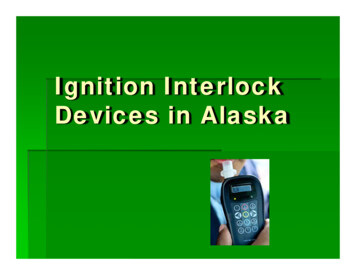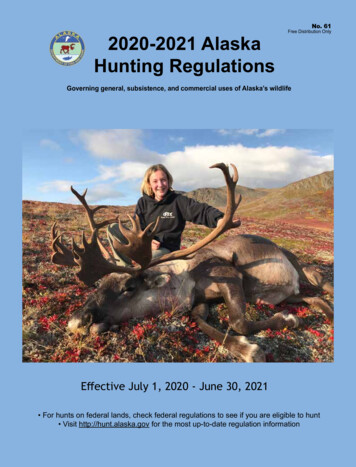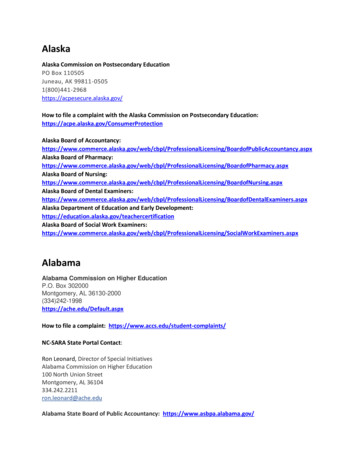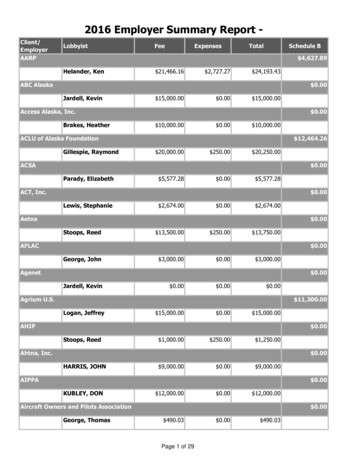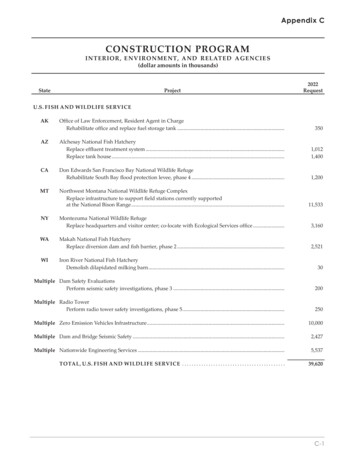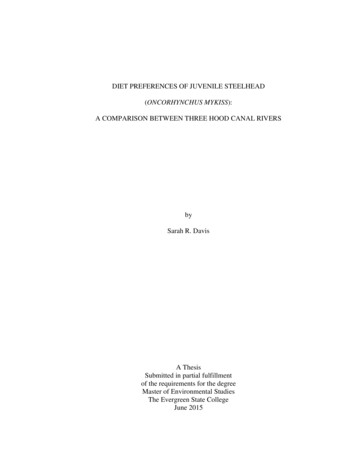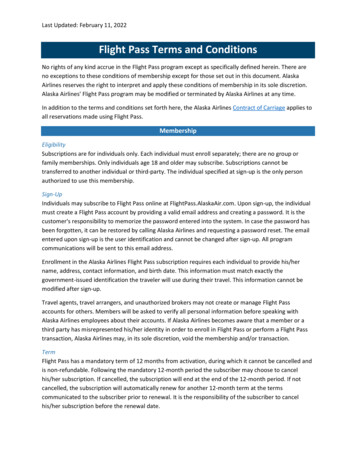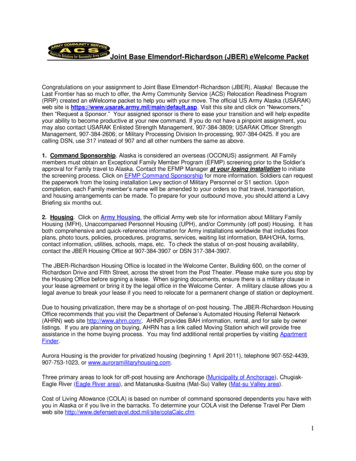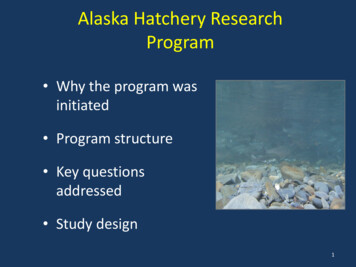
Transcription
Alaska Hatchery ResearchProgram Why the program wasinitiated Program structure Key questionsaddressed Study design1
Background/Salmon Enhancement IssuesSalmon HomingHatcheries2
AHRPBackground Alaska salmon fisherieswere severely depressed atstatehood, and reachedtheir nadir in 1973 and1974, when statewideharvest of all species was22 MAlaska commercial salmon harvest1900-1974Stopha (2018).3
AHRPBackground Alaska initiated State (1971)and PNP (1974) hatcheryprograms to support therecovery and enhancementof Alaska salmon fisheries. Remarkable renaissance ofAlaska salmon following1977 “regime” shift and inresponse to improvedmanagement practices. Wild stock harvest exceeded100 M in 1980, averaged 100 millionsince 1980.Alaska commercial harvest of wild salmon1900-2017.Stopha (2018)4
AHRPBackground Hatcheries began makingsubstantial contributions toharvest in 1980’s Statewide harvests (wildand hatchery) haveaveraged 175 M annuallyfor 2008-2017 Hatcheries produced anannual average of 67 M,33% of the harvest, 2008-2017Alaska commercial harvest of wild and hatcherysalmon, 1900-2017.Stopha (2018) Hatchery production now dominates the harvestof pink and chum salmon in PWS and chum salmon in SEAK.5
AHRPBACKGROUNDLarge-scale salmon releasesraise concerns for wild stockimpacts– Do hatchery fish detrimentallyaffect productivity andsustainability of wild stocks?– Alaska policy mandatessustainable productivity of wildstocks– Not a new concern: Alaska firststate to have a Genetics Policy in19856
ADF&G Genetic Policy Contains protections for wild stocks while allowing increasedproductivity for enhancement programs. priority will be given to protection of wild stocks from possibleharmful interactions with introduced stocks. Reduce gene flow from hatchery to wild Minimize introgression of ill-adapted genesMinimize hybrid depressionMaintain stock fitnessMinimize magnitude of strayingTemporal and spatialisolation are important7
AHRPTool for identifying hatchery fishOtolith Thermal MarkingTime (24 h cycle)Temp4,4nHAlaska marks 80% of hatchery fish 1.2Billion(100% for PWS and SEAK pink and chum) NPAFC Voucher DB (Images & Data): http://npafc.taglab.org/MarkSummary.asp8
Otolith Mark Use 1AHRPIn-Season Harvest MonitoringExample: Pink salmon, PWS SW District, /24WildDateHaught, S., J. Botz, S. Moffitt, and B. Lewis. 2017. 2015 Prince William Sound area finfish management report.Alaska Department of Fish and Game, Fishery Management Report No. 17-17, Anchorage.9
AHRPOtolith Mark Use 2Measure StrayingAre hatchery fish straying? If so, how many fish arestraying? SE Alaska - chumHeinl and Piston (2008-2010) Prince William Sound - pink, chum &sockeyeJoyce and Evans (1997-1999)Brenner and Moffitt (2004-2010) These studies found widespreaddistribution of hatchery strays intheir respective regions, and highrates of hatchery strays in streamsnear hatchery release sites10
AHRPRecognition of need to examine extent and impactof hatchery strays on wild stock fitnessand productivity PNP operators proposed that ADF&G organize a science panel ofexperts to design and implement a long term research project toinform future resource management decisions Funding partnership: State, Operators & Industry Fundamental questions aimed at examining extent and potentialimpacts of hatchery straying on fitness of wild stocks* Pink and chum salmon PWS* Chum salmon SEAK11
AHRPAHRP Science PanelPanel Charge –Identify priority research questions anddevelop a framework for research that couldbe used to address these questions.Panel Makeup – 13 members: Alaska Department of Fish and GameNational Marine Fisheries ServiceUniversity of AlaskaAquaculture associations12
AHRPAHRP StructureScience haging;thermalmarkingsField logistics;escapementsurveysFieldoperationsin PWSFieldoperationsin SEAK13
AHRP Hatcheries began making substantial contributions to harvest in 1980's Statewide harvests (wild and hatchery) have averaged 175 M annually for 2008-2017 Hatcheries produced an annual average of 67 M, 33% of the harvest, 2008-2017 Hatchery production now dominates the harvest of pink and chum salmon in PWS and chum salmon .
